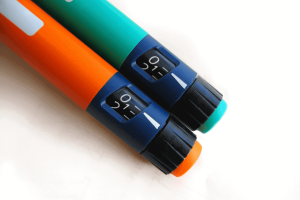
The Answers to Artificial Sweeteners
When you have diabetes, learning how to satisfy your sweet tooth can often be a challenge. Instead of getting a sugar fix from natural ingredients, some people turn to artificial sweeteners as a different way to curb their craving for something sweet.
Also called low-calorie or non-nutritive sweeteners, these sugar substitutes may seem like the ideal solution for people with diabetes who want to enjoy a sweet treat. In most cases, the body can’t break down the ingredients found in artificial sweeteners, which means unlike natural sugar, they don’t contain calories, carbs or fat. Despite these benefits, there is some question about whether artificial ingredients are truly a healthier option. Here are four popular types of artificial sweeteners on the market today, along with some pros and cons of using each one:
- Aspartame is the most popular artificial sweetener used in products today. Commonly found in “low-calorie” or “diet” foods, including sodas, yogurt and chewing gum, aspartame is more than 200 times sweeter than natural sugar, according to WebMD. One benefit of this sugar substitute is that the body can break it down into chemicals that are found in natural foods, such as meat, fruits, and vegetables. However, aspartame contains a chemical called phenylalanine, which can cause brain problems in people who have the metabolic disease phenylketonuria.
- Saccharin is the oldest artificial sweetener. According to Diabetes Daily, it started being produced in 1878. Saccharin is found in baked goods, including the cakes, cookies, and pies that are made at your local grocery store. Saccharin is also found in coffee sweeteners, such as Sweet N’ Low and Sugar Twin. While this sugar substitute may be a delicious, zero-calorie way to sweeten your favorite foods and drinks, some say saccharine may cause cancer. However, according to the National Cancer Institute, researchers haven’t found any links yet between saccharin and increased cancer rates.
- Sucralose is the main ingredient in Splenda, a sweetener that can be used instead of sugar in your cooking at home. According to WebMD, sucralose is created from natural sugar by scientists in a chemical process. You can also find this artificial sweetener at the grocery store in low-calorie dairy items and fruits canned in syrup. According to the American Diabetes Association, some studies have found that sucralose may affect the body’s reaction to glucose, which has the potential to worsen your diabetes symptoms.
- Stevia is a natural sweetener that comes from the Stevia plant. In 2008, the U.S. Food and Drug Administration (FDA) approved parts of the plant to be used as a low-calorie sugar substitute. However, more research needs to be completed before the entire plant is considered safe to use.





With all the controversy around artifical sweetners, I’ve been looking for a product with the fewest “cons”. It seems that all the substitutes have a significant aftertaste which turns most people off. There are a couple things that seem important. (1) reduce the amount of chemicals used and (2) minimized the aftertaste. I’ve finally found a product that does both these things and its pretty amazing. FireAngel sweetner is a relatively new product that cut way back on the amounts used yet was able to keep the sweetness. The taste is very close to sugur without the metalic or bitter aftertaste. You mix a pre-measured amount with water and 1-2 drops for a cup of coffee.